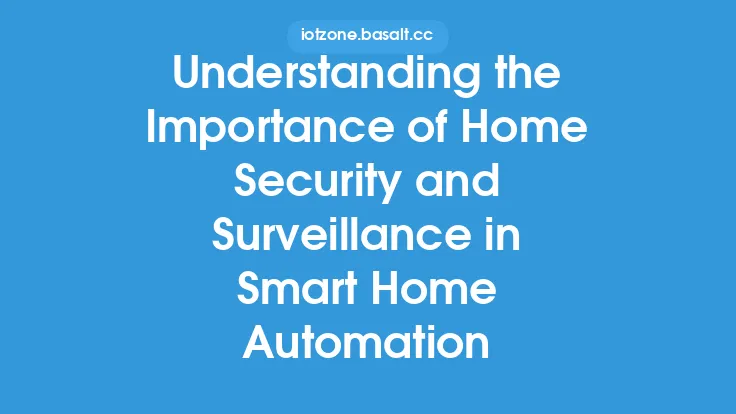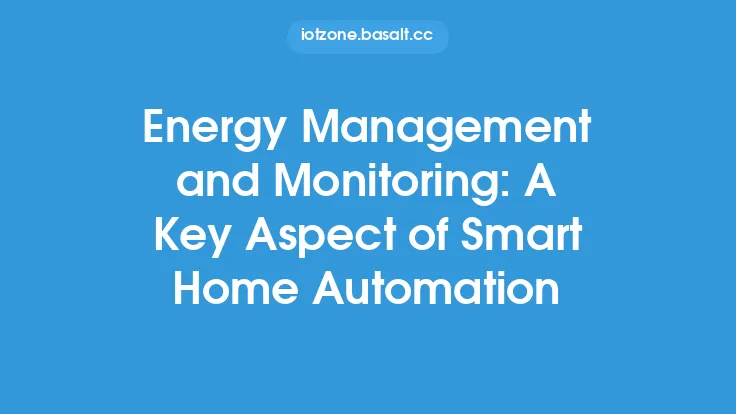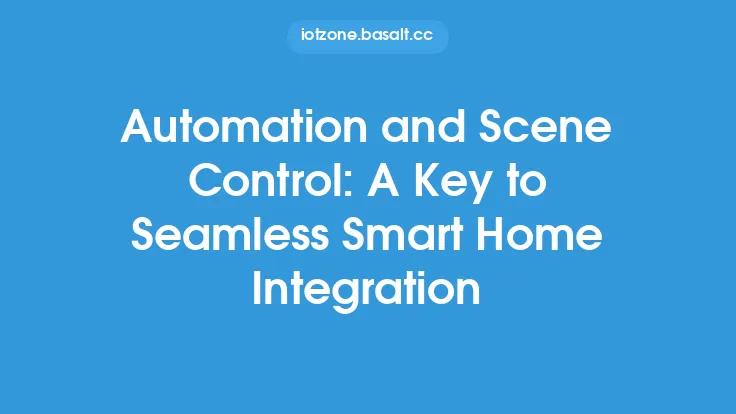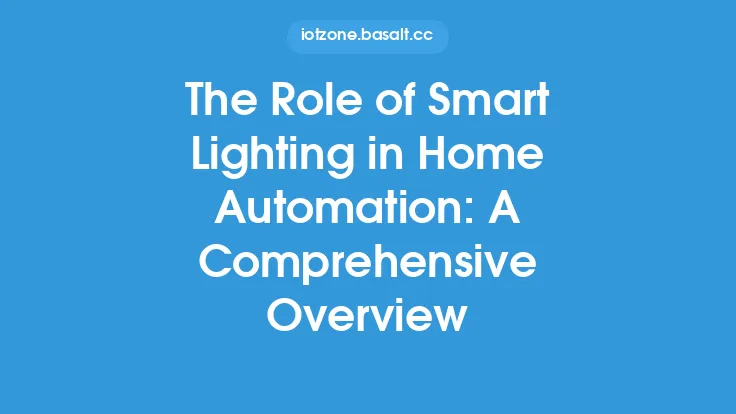Home security and surveillance are essential components of smart home automation, providing homeowners with a sense of safety and security. The integration of security systems with smart home technology has revolutionized the way we protect our homes and families. In this article, we will delve into the world of home security and surveillance, exploring the various technologies and systems that make up this critical aspect of smart home automation.
Introduction to Home Security and Surveillance Systems
Home security and surveillance systems are designed to detect and prevent potential threats to a home and its occupants. These systems typically consist of a combination of hardware and software components, including sensors, cameras, alarms, and monitoring systems. The primary goal of these systems is to provide real-time monitoring and alerts in the event of a security breach, allowing homeowners to take swift action to protect their property and loved ones.
Types of Home Security and Surveillance Systems
There are several types of home security and surveillance systems available, each with its own unique features and benefits. Some of the most common types of systems include:
- Wired systems: These systems use physical wires to connect sensors and cameras to a central control panel.
- Wireless systems: These systems use wireless communication protocols, such as Wi-Fi or Zigbee, to connect devices to a central control panel.
- Hybrid systems: These systems combine wired and wireless components to provide a comprehensive security solution.
- IP-based systems: These systems use internet protocol (IP) cameras and network video recorders (NVRs) to provide a scalable and flexible security solution.
Components of Home Security and Surveillance Systems
Home security and surveillance systems typically consist of several key components, including:
- Sensors: These devices detect potential security threats, such as motion, door and window openings, and glass breakage.
- Cameras: These devices provide visual monitoring of a home and its surroundings, allowing homeowners to see what's happening in real-time.
- Alarms: These devices sound a loud alert in the event of a security breach, deterring potential intruders and alerting homeowners and authorities.
- Monitoring systems: These systems provide real-time monitoring of a home's security system, allowing homeowners to receive alerts and take action in the event of a security breach.
- Control panels: These devices serve as the central hub of a home security system, allowing homeowners to arm and disarm the system, monitor cameras, and receive alerts.
Home Security and Surveillance Protocols and Standards
Home security and surveillance systems use a variety of protocols and standards to communicate and interact with other devices. Some of the most common protocols and standards include:
- ONVIF (Open Network Video Interface Forum): This protocol provides a standardized interface for IP-based security cameras and devices.
- PSIA (Physical Security Interoperability Alliance): This protocol provides a standardized interface for physical security devices, such as cameras and access control systems.
- Zigbee: This protocol provides a low-power, low-data-rate wireless communication standard for home automation devices, including security systems.
- Z-Wave: This protocol provides a low-power, low-data-rate wireless communication standard for home automation devices, including security systems.
Network and Internet Connectivity for Home Security and Surveillance
Home security and surveillance systems often rely on network and internet connectivity to provide real-time monitoring and alerts. This connectivity can be achieved through a variety of means, including:
- Ethernet: This provides a wired connection to a home network and the internet.
- Wi-Fi: This provides a wireless connection to a home network and the internet.
- Cellular: This provides a wireless connection to the internet via a cellular network.
- Broadband: This provides a high-speed internet connection, allowing for real-time monitoring and alerts.
Powering Home Security and Surveillance Systems
Home security and surveillance systems require a reliable power source to operate. This can be achieved through a variety of means, including:
- AC power: This provides a constant flow of electricity from a home's electrical grid.
- Battery power: This provides a backup power source in the event of a power outage.
- Solar power: This provides a renewable energy source, allowing home security and surveillance systems to operate off the grid.
Installation and Maintenance of Home Security and Surveillance Systems
The installation and maintenance of home security and surveillance systems are critical to their effective operation. This includes:
- Proper installation: This ensures that all components are correctly connected and configured.
- Regular maintenance: This includes software updates, firmware updates, and hardware inspections to ensure that the system is functioning correctly.
- Troubleshooting: This involves identifying and resolving any issues that may arise with the system.
Conclusion
Home security and surveillance are critical components of smart home automation, providing homeowners with a sense of safety and security. By understanding the various technologies and systems that make up home security and surveillance, homeowners can make informed decisions about how to protect their homes and families. Whether you're looking to install a new system or upgrade an existing one, it's essential to consider the various components, protocols, and standards that make up home security and surveillance systems. By doing so, you can create a comprehensive and effective security solution that provides real-time monitoring and alerts, giving you peace of mind and protecting your home and loved ones.





